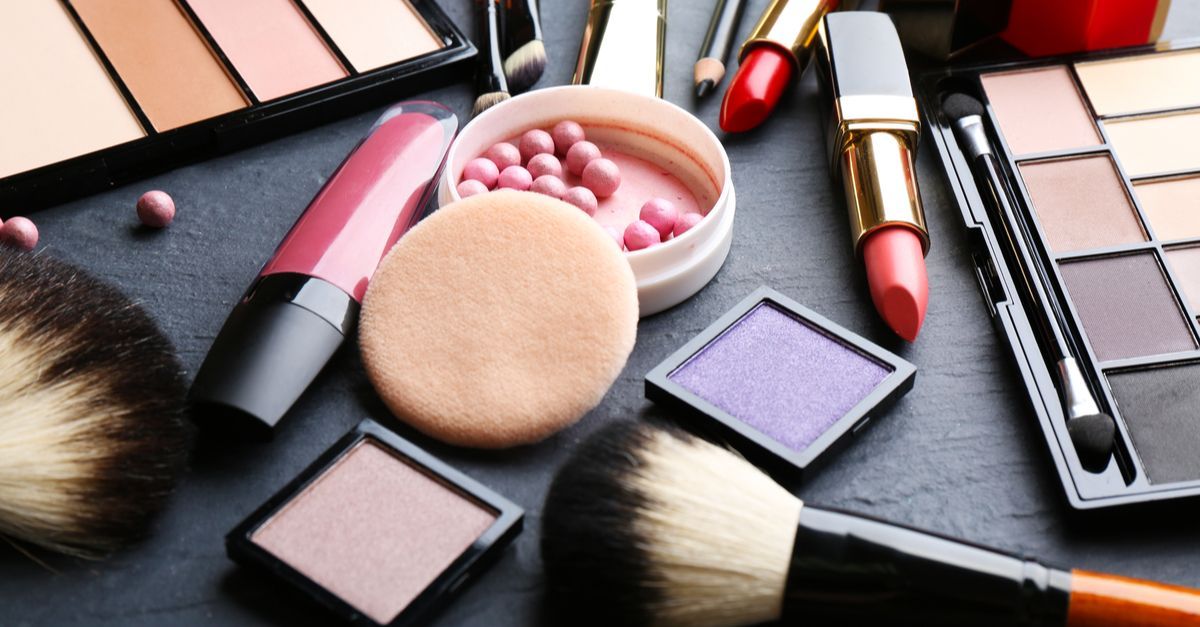PFAS Toxins Widely Found in Cosmetics

Looking for a way to avoid exposure to toxic chemicals? You may want to think twice about slathering on lipstick, eyeliner, mascara and other common cosmetics.
A new study reinforces earlier findings that a wide range of cosmetics contain “forever chemicals,” including PFAS, a group of “persistent” chemicals that the Environmental Protection Agency says can cause “adverse health effects.”
They’re called persistent because they don’t break down in the body. Instead, they accumulate and are linked at certain levels to cancer, birth defects, liver disease, thyroid disease, decreased immunity, hormone disruption, and a range of other serious health problems.
“Lipstick wearers may inadvertently eat several pounds of lipstick in their lifetimes,” said Graham Peaslee, senior author of the study and professor of physics at the University of Notre Dame. “But unlike food, chemicals in lipstick and other makeup and personal care products are almost entirely unregulated in the U.S. and Canada. As a result, millions of people are unknowingly wearing PFAS and other harmful chemicals on their faces and bodies daily.”
The peer-reviewed study, published in Environmental Science & Technology, detected what the study’s authors characterized as “high” levels of organic fluorine, an indicator of PFAS, in over half of 231 makeup and personal carerankin samples.
The majority of products with high PFAS levels did not list PFAS on the label, the study found.
Products tested included lipstick, eyeliner, mascara, foundation, concealer, lip balm, blush and nail polish and are sold in the United States and Canada.
Congress may act against PFAS
Congress may be taking measures to protect cosmetics users. Sens. Susan Collins and Richard Blumenthal have introduced legislation to ban all PFAS from makeup and personal care products. Rep. Debbie Dingell plans to introduce the same bill in the House.
“Americans should be able to trust that the products they are applying to their hair or skin are safe. To help protect people from further exposure to PFAS, our bill would require the FDA to ban the addition of PFAS to cosmetics products,” Collins said.
Specifically, the No PFAS in Cosmetics Act would direct the Food and Drug Administration (FDA) to issue a proposed rule banning the intentional addition of PFAS in cosmetics, as defined by the FDA, within 270 days of enactment, and require a final rule to be issued 90 days thereafter.
“It is beyond outrageous that PFAS chemicals that are contaminating our drinking water and threatening human health because of their links to breast and other cancers, reproductive harm and endocrine disruption are hiding in the beauty and personal care products women use every day,” said Janet Nudelman, Director of the Breast Cancer Prevention Partners’ Campaign for Safe Cosmetics, in a news release.
How to avoid PFAS
So, how do you avoid exposing yourself PFAS through cosmetics? It’s not easy.
The study’s authors said they tested cosmetics made by dozens of brands, including L’Oréal, Ulta, Mac, Cover Girl, Clinique, Maybelline, Smashbox, Nars, Estée Lauder and others. But they didn’t say which brands contained the most toxins.
So, can consumers just read the label? Well, yes and no. For one thing, the study found that many products that contained PFAS didn’t list them. Cosmetics are generally not considered drugs and are not regulated as closely as prescription and over-the-counter drugs. Manufacturers are required to list ingredients, but the lists are ordered by quantity.
This means that water will usually appear first, with other inert ingredients finally followed by potent chemicals far down the list. Michigan State University’s Center for Research on Ingredient Safety has details about labeling on its website.
And it’s not like you can just peer at the label and look for “PFAS.” There are hundreds of PFAS chemicals with complex names not easily recognized by consumers, making it even more difficult to monitor contents.
The study found that in general the products that most frequently contain high levels of fluorine include waterproof mascara (82% of brands tested), foundations (63%) and liquid lipstick (62%).
So, does this mean that avoiding cosmetics will keep us toxin-free? Unfortunately not, since besides cosmetics, PFAS substances are commonly found in food packaging, clothing and carpeting. They also exist in the ground and in the water, thanks to decades of manufacturing processes that have since been curtailed but that have left a massive amount of the toxins in the environment.
Thus, completely avoiding exposure is most likely impossible but when it comes to cosmetics, buying only brands that list ingredients you can understand is a good start.
Check the Campaign for Safe Cosmetics for more information.
